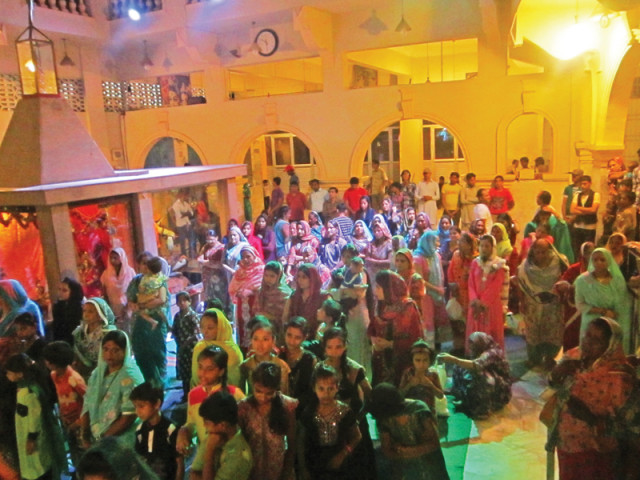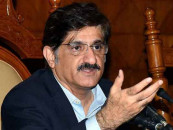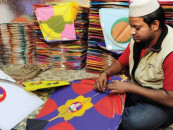Sacred festival: Hindus celebrate Ganesha Chaturthi pooja in Karachi
Thousands of worshippers congregated in temples across the city for the prayers.

Sacred festival: Hindus celebrate Ganesha Chaturthi pooja in Karachi
“Ganesha Chaturthi pooja utsav is celebrated during the first 10 days in the month of Sarawan - a holy month,” explained one of the worshippers, Ishwar Devi. “On the 11th day, the statue of Lord Ganesha is immersed into the river, lake or the sea, preferably flowing water.” This ritual is called Ganpati Visarjan. The replicas are left in the water while the expensive and originals statues are just dipped into the sea on the last day of the prayers.
The statues of Lord Ganesha are decorated with coconuts, flowers and sweets, after which they are taken in a procession through the street. “Statues from all over Karachi are brought to the Lakshmi Narayan temple,” said Ramesh Singh, a devotee at the temple. “Thousands of devotees join the procession.” The participants chant prayers and hymns to the tunes of the dhol, tasha and other traditional instruments.
Seventy-year-old Parvati Devi, who was participating in the prayers at the Shri Ratneshwar Maharaj temple, told The Express Tribune that the temple used to attract over 1,000 worshippers at this time of the year. Over the last few years, however, the number has decreased due to the high transport costs and the construction work in Clifton.
Over 10 statues of Lord Ganesha, including those from Dehli Colony, Madrasi Para, Jinnah Colony, Soldier Bazar and Clifton, were brought to the Lakshmi Narayan Temple on Saturday evening for the Visarjan.
“The ‘murtis’ [idols] are placed in a boat and taken to the middle of the sea, river or lake for Visarjan,” explained Vishal Rajput, the general secretary of the Shri Maharashtra Panchyat. The devotees break their fast after Ganpati Visarjan with the ‘Prasad of the Lord Ganesh’, the Modat ka Laddoo.
Published in The Express Tribune, September 1st, 2014.



















COMMENTS
Comments are moderated and generally will be posted if they are on-topic and not abusive.
For more information, please see our Comments FAQ